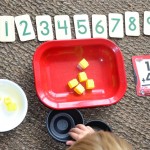How Children Learn: One Size Education Does NOT Fit All.
 There are several different learning styles, and each has a direct impact on how your child learns, processes information, and their level of success in the classroom.
There are several different learning styles, and each has a direct impact on how your child learns, processes information, and their level of success in the classroom.
 There are several different learning styles, and each has a direct impact on how your child learns, processes information, and their level of success in the classroom.
There are several different learning styles, and each has a direct impact on how your child learns, processes information, and their level of success in the classroom.
Visual students don’t usually test well and may even struggle with test anxiety. Right brain, visual-spatial individuals are conceptual, non-linear thinkers and they often miss details, struggle with memorization and prefer images over words. But there are always going to be tests at school and we need to help our visual kids conquer their test […]


In the video Dr. Matthew Peterson shares some great insights on why the current language heavy approach to teaching math is not working, especially for children that learn visually and conceptually. In answer to these challenges, their group, The Mind Research Institute has developed math-learning software to use in the classroom and is yielding impressive results. This video includes examples of their software – which I must admit – move way too fast for me to fully grasp. But when seeing the children working and discussing, in front of their computers, the programs seem to move at a pace that invites engagement and understanding.
